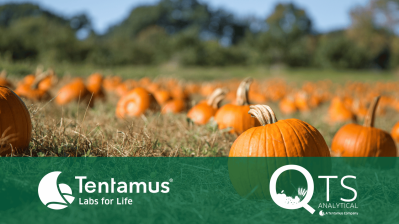From Pumpkin Patch to Halloween: How Post-Harvest Handling Affects Pesticide Residues

As the air turns crisp and fields turn golden, pumpkins take centre stage – it’s common to see them adorning the porches and driveways of homes at this time of year. But behind those carved orange faces lies a critical and often overlooked issue: pesticide residues.
What happens to pumpkins after they are harvested influences how much residue remains on their surface – and this article will explore how post-harvest handling impacts this.
Why are Pesticides Used on Pumpkins?
Like many other crops which are grown for use/consumption by the population, pumpkins can be affected by several pests and diseases during the growing season. Some examples include:
- Squash bugs
- Aphids
- Cucumber beetles
To ensure a marketable crop, farmers will often rely on the use of pesticides, fungicides and insecticides to combat these issues. The substances used are typically regulated and applied according to safety guidelines, however, residues can persist on the skin of the fruit, especially if applied close to the time of harvest.
Post-harvest Handling
Post-harvest handling refers to all processes which the pumpkins go through after being picked. This commonly includes:
- Cleaning and washing
- Curing (which hardens the skin and extends shelf life)
- Packaging and shipping
- Retail display and consumer use
Each of these steps can influence the levels and persistence of residues on the product. The impacts are discussed further below:
Cleaning and Washing
Washing pumpkins can help to reduce surface residues for compounds which are not systemic, if done with water and mild detergent it can have a reasonable impact. It should be noted that not all pesticides are water-soluble and as such waxy compounds and systemic treatments may remain intact. Gentle mechanical scrubbing can remove more residue but may also result in damage to the skin, reducing shelf life.
Curing and Storage
It is common for pumpkins to be cured in high humidity and at elevated temperatures (around 27°C) to firm the rind and prolong the lifespan of the product. This process typically takes 1-2 weeks and can also result in lower levels of expected residues, some of which break down more readily at the higher temperature and some which have shorter half-life degrading over the 2 weeks that the product is being stored.
It should be noted that colder storage conditions can often have the opposite effect, extending the time taken for breakdown of residues present.
Time Between Harvest and Use
As stated above, most residues in use will degrade over time, this means that the longer the interval between application of treatment and the use of the product, typically the lower the level of residue present. This is due to natural chemical breakdown, especially for pesticides that are not highly persistent.
Exposure to Light and Air
Direct exposure to sunlight and air can also accelerate degradation of certain pesticides, retail displays or porch decorations that leave pumpkins exposed to the elements also encourage breakdown of residues compared to those kept indoors or in dark storage.
Are Halloween Pumpkins a Health Concern?
In most cases, no. You might not know, but the majority of pumpkins used for carving are not intended for consumption and that pesticide levels are checked to ensure compliance with safe legal limits.
The journey from pumpkin patch to porch step is much more than just a seasonal event – it’s a story of agriculture, chemistry and public health. Understanding these processes can help to empower decisions at every stage of the supply chain because after all, a safer Halloween starts with informed choices – and maybe a good scrub!
This article was written by Steven Mann, General Manager at QTS Analytical - A Tentamus Company